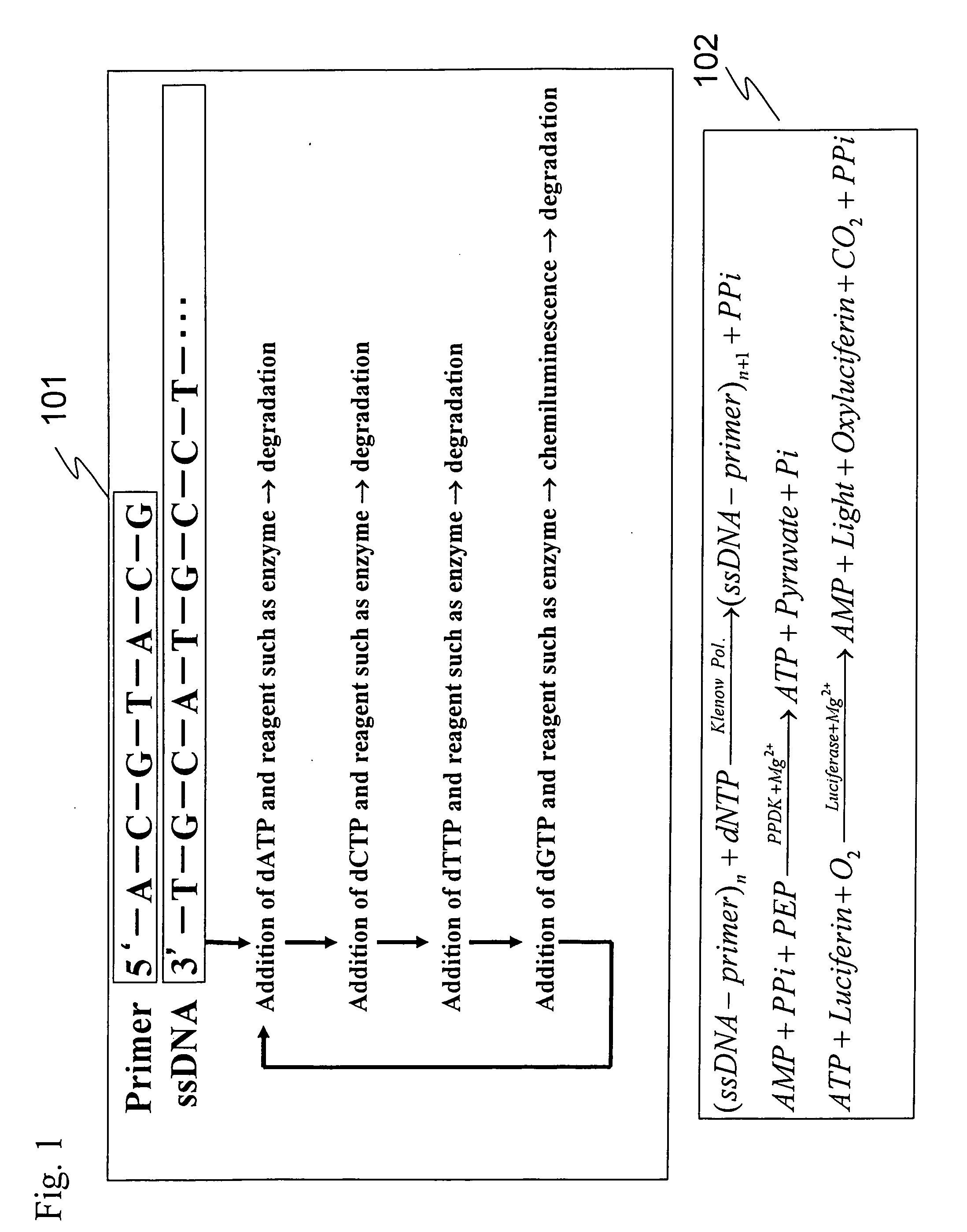Method and reagent for sequencing
a technology of reagents and sequencing methods, applied in the field of methods and dna sequencing, can solve the problems of not being able to reduce detection limits and not being able to achieve pyrosequencing quite effectively, and achieve the effects of preventing other reaction inhibition, high sensitive measurement, and reducing background ligh
- Summary
- Abstract
- Description
- Claims
- Application Information
AI Technical Summary
Benefits of technology
Problems solved by technology
Method used
Image
Examples
example 1
1. Outline and Principle
[0047] In this Example, a DNA sequencing method performed by converting pyrophosphate (PPi) produced in DNA complementary strand synthesis to ATP by the action of PPDK and detecting chemiluminescence generated from chemiluminescence reaction using luciferase was investigated.
[0048] Enzymes used were DNA polymerase (EXO-Klenow, Ambion, Austin, Tex., USA, Cat #2008), PPDK (Kikkoman, PPDK-E 61317), apyrase (Apyrase from Potato, Sigma, St Louis, Mo., USA, A6410), and luciferase (Luciferase, Sigma, St Louis, Mo., USA, L1759). This reaction system is complicated, wherein four enzymatic reactions simultaneously proceed, and the substances involved in the reactions are correlated. The outline of the reaction of the present invention is shown in FIG. 1. Moreover, the outline of conventional pyrosequencing reaction using APS (adenosine 5′-phosphosulfate) is shown in FIG. 2.
[0049] In the conventional pyrosequencing, ATP production reaction from PPi has been carried ...
PUM
| Property | Measurement | Unit |
|---|---|---|
| pH | aaaaa | aaaaa |
| temperature | aaaaa | aaaaa |
| volume | aaaaa | aaaaa |
Abstract
Description
Claims
Application Information
 Login to View More
Login to View More - R&D
- Intellectual Property
- Life Sciences
- Materials
- Tech Scout
- Unparalleled Data Quality
- Higher Quality Content
- 60% Fewer Hallucinations
Browse by: Latest US Patents, China's latest patents, Technical Efficacy Thesaurus, Application Domain, Technology Topic, Popular Technical Reports.
© 2025 PatSnap. All rights reserved.Legal|Privacy policy|Modern Slavery Act Transparency Statement|Sitemap|About US| Contact US: help@patsnap.com



